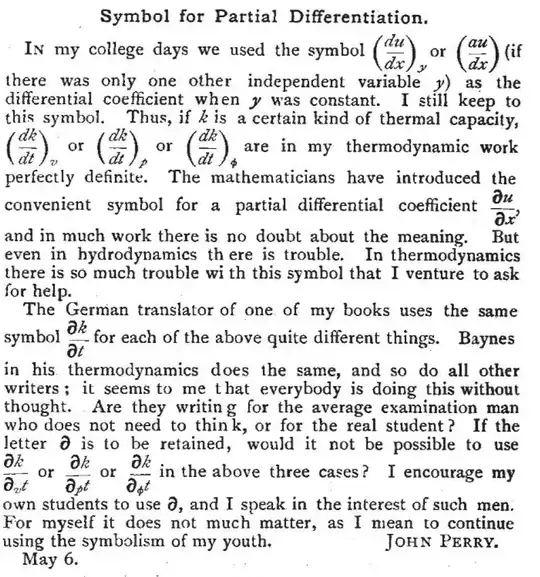In his 1841 article De determinantibus, Jacobi remarked that the notation $\frac{\partial z}{\partial x}$ for partial derivatives is ambiguous. He observed that when $z$ is a function of $x,y$ as well of say $x,u$, then the coefficient $\frac{\partial z}{\partial x}$ appearing in the linear expansion of $dz$ with respect to $dx,dy$, denotes something else than the partial derivative $\frac{\partial z}{\partial x}$ appearing in the expansion of $dz$ wrt $dx,du$.
As he himself writes:
In order for the partial differentials, of a function which depends on more than one variable, to be completely determined, it does not suffice to provide the function to be differentiated and the variable with respect to which to differentiate; one must moreover express which quantities remain constant during the differentiation.
A longer excerpt can be found here.
Probably many others have made the same observation since then. Vladimir Arnold for instance makes it in a footnote to his Classical Mechanics. But partial derivatives already existed for 100 years before De determinantibus. (With a slightly different notation that has the same problem.)
Q1: Was Jacobi the first mathematician to point out the ambiguity?
In the same article, Jacobi also proposed a fix for the problem: he suggested we write $\frac{\partial z(x,y)}{\partial x}$ for the partial derivative when $y$ is held constant, and $\frac{\partial z(x,u)}{\partial x}$ when $u$ is held constant. This introduces a new problem, since it overloads the notation for function application $f(x,y)$, which already had an established and different meaning at that time.
Q2: Did no one object to the suggestion of Jacobi?
Finally, in many physics textbooks (thermodynamics in particular), the problem is fixed by writing $ \left(\frac{\partial z}{\partial x}\right)_y $ for the derivative of $z$ wrt $x$ when $y$ is held constant.
Q3: Who proposed this fix and when?

Wrote a short piece on it here: https://www.academia.edu/39723296/Exploring_Alternate_Notations_for_Partial_Differentials
– johnnyb Jul 20 '19 at 21:03